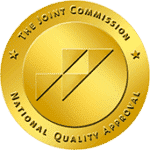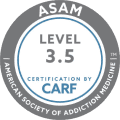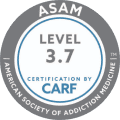Many people who suffer from addiction also have a co-occurring mental health disorder that can interfere with recovery when not properly managed or treated. Drug and alcohol rehab centers offer treatments for these co-occurring disorders to help patients experience a comprehensive and long-term recovery from both their addiction and mental illness.
Continue reading to learn more about what co-occurring disorders are, how treatment works, and where you can find this essential therapy in Massachusetts.
What Is a Co-Occurring Disorder/Dual Diagnosis?
A co-occurring disorder is also known as a dual diagnosis. A person with co-occurring disorders or a dual diagnosis has both a mental illness and a substance use disorder. In some instances, a dual diagnosis may include addiction or physical illness instead of a mental illness.
According to the National Library of Medicine (NLM), about 50% of people with a mental illness will also have a substance use disorder at some point in their lives, and vice versa. Each of these conditions can worsen the other, so treating both conditions simultaneously is necessary to help people achieve long-term sobriety from drugs and alcohol.
An estimated 7.7 million adults in the United States are diagnosed with co-occurring disorders, reports the National Institute on Drug Abuse (NIDA). Of the 20.3 million adults with substance use disorders, nearly 38% also have a mental illness. Of the 42.1 million adults with a mental illness, 18.2% also have a substance use disorder.
Unfortunately, not everyone with co-occurring disorders receives the treatment they need to successfully recover from both disorders. In 2017, 34.5% of people with co-occurring disorders received treatment only for mental health, while nearly 4% received treatment only for their substance use disorder. People who do not receive treatment for both disorders often get stuck in a cycle of addiction and relapse and cannot fully recover without dual diagnosis treatment.
What Are the Symptoms of Co-Occurring Disorders?
Mental health disorders and substance use disorders share many of the same symptoms, which can make it difficult for some people to determine whether they are suffering from addiction, a mental illness, or both. However, the medical professionals at drug and alcohol rehab centers are highly trained and experienced enough to tell whether a person has one or both disorders.
Common symptoms of co-occurring disorders include:
- Withdrawing from friends, family, and social activities
- Spending more time alone, in isolation
- Changes in eating and sleeping habits
- Changes to sexual libido (sex drive)
- Sudden and extreme mood changes
- Irritability
- Loss of interest in favorite hobbies and activities
- Decline in personal hygiene
- Engaging in risky behaviors, such as drunk driving or unsafe sex
- Unexplained health problems, such as pain
- Poor memory and concentration
- Difficulty or failure to manage important responsibilities related to work, school, or family
- Decline in work or academic performance
- Misuse of drugs and alcohol
- Suicidal thoughts or attempts
All patients who seek treatment at drug and alcohol rehab centers undergo a thorough evaluation and assessment by a team of medical professionals before they start treatment. During this time, patients are screened for co-occurring disorders, which helps the rehab center develop a customized treatment plan that includes dual diagnosis therapy for those who receive a dual diagnosis.
What Is Co-Occurring Disorder/Dual Diagnosis Treatment?
Dual diagnosis treatment focuses on teaching patients how to manage and live with their mental illness while living a healthy, sober lifestyle. Treatment usually combines the use of medications with behavioral therapies that help patients change harmful behaviors while adopting better coping methods.
According to the NIDA, behavioral therapies that may be used in dual diagnosis therapy include:
- Cognitive-behavioral therapy, which helps patients identify and correct negative behaviors related to their addiction, such as misusing sedatives to relieve anxiety and replacing drug use with exercise, meditation, or deep breathing.
- Dialectical behavioral therapy, which reduces self-harm behaviors such as cutting or drinking alcohol that patients may resort to when coping with severe symptoms of mental illness.
- Assertive community treatment, which involves treating patients in their own communities to help them feel more comfortable and improve their quality of life.
- Contingency management, which rewards patients with prizes and vouchers when they demonstrate positive, healthy behaviors, such as attending support group meetings instead of using drugs when feeling stressed.
Medications in dual diagnosis therapy may be used to reduce symptoms of the mental illness and/or those of the substance use disorder. For example, antidepressants may be used to reduce depression, while sedatives may be used to reduce aggression. Patients with opioid and alcohol use disorders may be given medications that reduce cravings for these substances, along with withdrawal symptoms.
Acamprosate, disulfiram, and naltrexone are the three medications approved for the treatment of alcohol use disorder. Acamprosate reduces the desire to drink to help patients stay abstinent. Disulfiram motivates patients to stay sober due to how it causes unpleasant symptoms, including vomiting, chest pain, and breathing problems when used with alcohol. Naltrexone blocks the pleasurable effects of alcohol, so patients will not experience happiness or intoxication if they decide to drink.
Methadone, buprenorphine, and naltrexone are the three medications approved for the treatment of opioid use disorder. Methadone and buprenorphine prevent cravings for opioids and reduce opioid withdrawal symptoms. Naltrexone blocks the pleasurable effects of opioids just like it does for alcohol.
Doctors at drug and alcohol rehab will prescribe medications to patients as needed based on their symptoms and unique health situations.
Why Are Co-Occurring Disorders Common Among People With Addiction?
Mental illnesses and addiction have a close relationship due to the way one condition often increases the risk for the other.
Mental illnesses cause people to experience a wide range of negative and unpleasant symptoms that can be extremely difficult to cope with. Sadness, guilt, anxiety, and hallucinations are some of the many symptoms that can reduce the quality of life and interfere with everyday activities. Some people with mental illnesses may use drugs and alcohol as a way to cope with their symptoms or to make them go away. Unfortunately, drugs and alcohol are temporary solutions to mental illness and usually make symptoms worse.
On the other hand, addiction can lead to mental illness due to the way chronic use of drugs and alcohol can change brain chemistry and modify a person’s behaviors. For example, drugs and alcohol increase the brain’s levels of “feel-good” hormones, including dopamine and serotonin. Over time, the brain comes to rely on drugs and alcohol to provide higher levels of these hormones. When a person stops using drugs and alcohol after becoming addicted, the brain is unable to produce these hormones on its own and can leave the person feeling sad, depressed, and uninterested in their favorite activities.
Mental illnesses and substance use disorders also share many of the same risk factors, which is another reason these disorders commonly occur together. For instance, environmental factors such as stress or trauma can change a person’s genetics, which can then be passed down to their children to increase their children’s risk for mental illness and addiction.
What Are the Most Common Types of Co-Occurring Disorders?
Co-occurring disorders may include any combination of two or more substance use disorders and mental disorders. However, certain co-occurring disorders are more common than others.
According to the National Institute of Mental Health and Substance Abuse and Mental Health Services Administration (SAMHSA), common co-occurring disorders include:
- Anxiety and mood disorders
- Bipolar disorder
- Schizophrenia
- Major depressive disorder (clinical depression)
- Post-traumatic stress disorder (PTSD)
- Attention deficit hyperactivity disorder (ADHD)
- Borderline personality disorder
- Eating disorders
- Obsessive-compulsive disorder (OCD)
- Conduct disorders (such as that which cause aggression, hostility, and violence)
The NIDA reports that a dual diagnosis may also involve a substance use disorder and a chronic physical health condition such as pain, cancer, or heart disease.
Chronic pain is a common comorbid condition among those with opioid use disorder. People who become addicted to opioids after using them to reduce pain will usually go back to experiencing pain when they stop using opioids. Chronic pain is also a side effect of long-term opioid use or opioid misuse—meaning those who weren’t experiencing chronic pain, to begin with, may now be suffering chronic pain due to opioid addiction.
Other common comorbid physical health conditions are HIV and hepatitis C. These co-occurring conditions are usually spread through needle-sharing and unsafe sex between users of injection drugs like heroin and methamphetamine.
What Are the Benefits of Dual Diagnosis Treatment?
Dual diagnosis treatment offers lifelong benefits for those who need help recovering from both an addiction and mental illness. Dual diagnosis treatment can reduce the risk of relapse, overdose, and poisoning among those who use highly dangerous and habit-forming substances. It can also help patients improve their quality of life by teaching them how to effectively manage symptoms of mental illness without resorting to drug and alcohol use.
Other benefits of dual diagnosis treatment, according to SAMHSA, include:
- Reduction in drug and alcohol use, or complete abstinence
- Improvement in psychiatric symptoms
- Improved daily functioning
- Decreased hospitalization
- Fewer medication interactions (such as poisoning when combining alcohol with sedatives)
- Fewer arrests
- Increased housing stability
- Increased chance for successful treatment and long-term recovery from both disorders
How Long Does Dual Diagnosis Treatment Last?
The length of a dual diagnosis treatment program will vary from one patient to the next based on factors including the severity of one or both co-occurring disorders and recovery progress. Treatment may last one month or several years, depending on how long it takes the patient to recover from addiction and learn how to effectively manage symptoms of their mental illness.
Dual diagnosis therapy is available at every phase of an addiction treatment program. Drug and alcohol rehab programs typically last at least 30 days, though outpatient treatment may last for several years, especially if the patient needs ongoing therapy for their co-occurring disorders.
Doctors can usually provide patients with a more realistic timeframe regarding how long dual diagnosis treatment will last based on their unique situation.
Does Health Insurance Cover Co-Occurring Disorder Treatment?
More than 52% of adults with co-occurring disorders say they have not sought treatment for their mental illness because they cannot afford it. However, many health insurance plans cover the cost of behavioral health disorders, including addiction and mental illness.
The best way patients can determine whether their health plans cover dual diagnosis treatment is to contact their insurance providers directly. Some drug and alcohol rehab centers will also perform a free insurance benefits check to confirm coverage and benefits for their patients.
There may be some instances where dual diagnosis treatment is not covered by health insurance, or patients do not have any health insurance to help pay for treatment costs. More than 35% of adults with co-occurring disorders say they do not have health insurance and cannot afford addiction treatment. Furthermore, nearly 10% of adults with co-occurring disorders have health insurance plans but say that their plans do not cover addiction treatment.
Many drug and alcohol rehab centers offer various financing options for patients who do not have health insurance or whose plans do not cover behavioral health treatment. Some rehab centers may even adjust the cost of treatment to make it more affordable based on the person’s income level. Before ruling out the option of seeking addiction treatment, patients should ask treatment centers about available financing options and payment plans.
Where Can People Get Dual Diagnosis Treatment?
Nearly 24% of people with co-occurring disorders say they haven’t received treatment for their mental illness because they don’t know where to find treatment. However, dual diagnosis therapy is available at many accredited drug and alcohol rehab centers that offer high-quality, evidence-based addiction treatment. Mental illness is common among those with substance use disorders, therefore, many rehab centers offer this treatment to help patients experience a full, long-term recovery from both conditions.
Dual diagnosis therapy is included in detox programs and residential, inpatient, and outpatient rehab programs.
Detox programs guide patients safely through drug and alcohol withdrawal. People who become physically dependent on substances including alcohol, opioids, and benzodiazepines often need 24-hour medical care and supervision. Medications are used to reduce symptoms and potential complications. Some patients in detox with co-occurring disorders may receive medications to reduce anxiety and depression, as well as behavioral therapy if they feel physically well enough to engage in therapy sessions.
Dual diagnosis therapy is included in most residential and inpatient rehab programs. These live-in rehab programs involve several hours of therapy a day, including dual diagnosis therapy for those with co-occurring disorders. In addition to learning how to manage symptoms of their mental illness, patients learn essential skills that help them stay sober and avoid triggers in everyday situations.
Outpatient rehab programs also include dual-diagnosis therapy. Outpatient programs take place between two and eight hours a day on at least two days a week and are ideal for patients who are ready to become more independent and resume their work, school, and family lives. Patients who have been coping with mental illness for many years usually need several months or years of dual diagnosis therapy and can visit the rehab center as often as needed to learn how to stay sober while controlling their symptoms.
What Happens After Co-Occurring Disorder Treatment?
Addiction recovery is often a lifelong process and doesn’t necessarily stop when an addiction treatment program has ended. Some people need ongoing support and guidance after receiving dual diagnosis therapy in a drug and alcohol rehab program.
Patients with co-occurring disorders are typically encouraged to attend regular 12-step support group meetings after completing their drug and alcohol rehab programs. Alcoholics Anonymous, Narcotics Anonymous, and Cocaine Anonymous are some of the many peer support groups that can help these individuals stay on track with recovery. Many of the people in these support groups also have co-occurring disorders and can share several tips and strategies for staying sober.
Peer support groups are free to attend, come with no obligations, and are located in nearly every city to support those in recovery from addiction and co-occurring disorders.
Patients who complete drug and alcohol rehab programs may also be encouraged to join the treatment center’s alumni program. An alumni program holds monthly events that celebrate recovery, and that invites all former patients to engage in fun, sober activities. Alumni events may be held on-site or off-site and can be an enjoyable way for patients to stay connected with peers in the recovery community.
Where Can I Find Co-Occurring Disorder Treatment in Massachusetts?
The Haven in New England includes co-occurring disorder and dual diagnosis treatment in its inpatient, residential, and detox programs in Worcester, Massachusetts. Our addiction treatment center is located at 1369 Grafton Street in Worcester, MA 01604. Contact us today at (844) 933-4145 to learn more about our available drug and alcohol rehab programs that can help you or your loved one experience a safe and comfortable recovery from addiction and mental illness.



